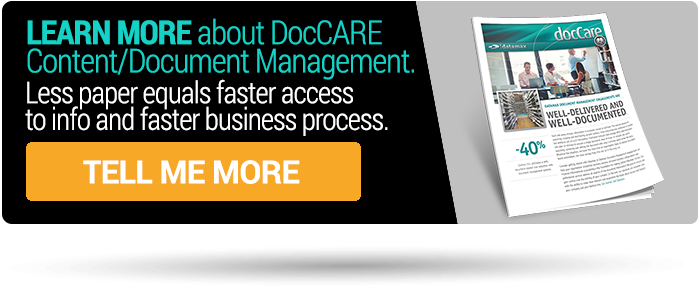
Stop wrestling a manual accounts payable process – automate it and steal some of your valuable time back.
When it comes to Accounts Payable (AP), most organizations receive invoices from a number of digital channels (mail, fax, email, electronic data interchange - EDI, etc.), but the overwhelming majority of them are paper documents.
Though invoices may be received in various forms, a typical accounts payable process usually remains the same, following a series of steps: capture the invoice, manually key in the data, code the invoice against purchase orders or general ledger (GL) accounts, route for approval, and issue payments.
Since you and your users are only human – humans that are wrestling manual processes and shouldering an unrelenting workload – someone is inevitably going to make a mistake (most likely during data entry). When you’re working with manual AP processes, long-term storage and retention are lacking, invoices slip through the cracks, and early payment discounts are missed.
And no, hiring more people – unfortunately – won’t solve these issues; that wouldn’t be feasible or sustainable.
But there is a solution: Process Automation.
Process Automation
Core business processes can be automated and streamlined with document management software (you may see this discussed in the context of enterprise content management – ECM – technology).
By removing paper, electronically capturing the documents, converting them into images, analyzing their content, and creating workflows to automatically route for review and action, account payable’s repetitive, time-consuming tasks can be streamlined. Process automation allows your AP departments to work smarter and squeeze more out of their already limited time.
And an ECM system will manage the appropriate retention and keep the associated records in compliance. So, no need to worry about policies, state laws, and regulatory requirements,
Steps in Automated Accounts Payable
You already know what an AP process looks like manually, but how does the process work once it’s been automated?
Here are the steps in an automated accounts payable process:
1. Scan, Capture, and Import:
Since capture can automatically import electronic invoices, the process begins by capturing paper invoices. This can be done by scanning them into the ECM system via a scanner (this can also be done with a copier or sometimes even a smartphone) and with document imaging software.
2. Purchase Order Information:
All the information associated with the PO and the vendor is transferred and integrated to the document’s metadata once the invoices are in the ECM system. So when users open an invoice in the system, they have all the information they need – quickly – at their fingertips.
3. Route:
From the ECM system, the invoices will automatically be routed by email to the department head for approval (where they can either approve or deny).
4. Approve or Deny:
If the department head denies the routed invoice, the invoice will be sent back to the requester with an explanation for the denial. But if the invoice is approved, it will be sent on to the controller who will also either deny of approve.
Once sent to the controller, if the invoice is denied then the system sends it back to the department where it is corrected and resubmitted. But, if the controller approves the invoice then – through integration – payment is authorized and information is transferred to the ECM system.
5. Save and Assign:
The ECM system is able to automatically save the paid invoices once it has the payment information. And, based on your company’s records management schedule, assign the retention period to the invoice.
Stop wrestling a manual accounts payable process – automate it and steal some of your valuable time back.
Want to know more about how an automated AP process can work for your company? Ask us – we’d love to help.


